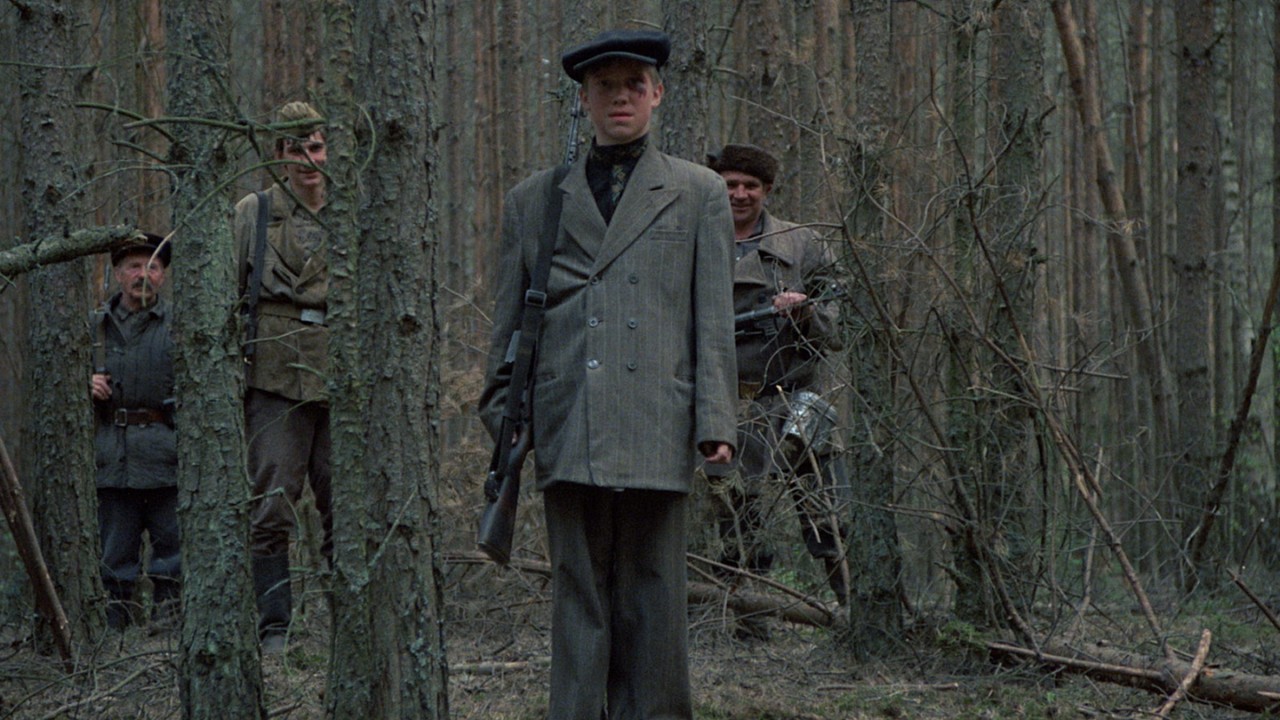Elem Klimov was a significant figure in Soviet cinema, known for his distinct filmmaking style and powerful socio-political commentary. His body of work, though not extensive, left a profound impact on the world of cinema. Klimov is best known for Come and See, a harrowing anti-war film that starkly portrays the horrors of World War II and stands as one of the most disturbing yet impactful war films ever made.
The socio-political climate of the Soviet Union deeply influenced Klimov’s journey into filmmaking. His early films, such as Welcome, or No Trespassing and Adventures of a Dentist, often incorporated elements of surrealism and satire, effectively critiquing the era’s bureaucratic absurdities and societal norms. His work often served as a subversive mirror to Soviet society, subtly revealing its many contradictions and injustices.
Klimov’s visual style and sound design were as unique as his thematic content. He created an atmospheric and often disorienting cinematic experience by employing unconventional cinematography and immersive soundscapes. This approach is most striking in Come and See, where the audience is thrust into war’s chaotic and horrific milieu. It’s a testament to Klimov’s skill that his films are as aesthetically compelling as they are narratively engaging despite the grim subject matter.
A significant influence on Klimov’s work was his partnership with fellow filmmaker and wife, Larisa Shepitko. Their creative and personal collaboration deeply influenced his filmmaking approach. After her tragic death, Klimov’s cinematic style turned towards more sombre and profound explorations of human suffering, as evidenced in Come and See, a film often viewed as a response to his grief and a damning critique of war.
Despite his relatively small filmography, Klimov’s influence on Russian and international cinema is considerable. His innovative aesthetic and fearless commentary on societal and political issues have inspired a new generation of filmmakers worldwide. Directors like Ari Aster and Lars von Trier have cited Klimov’s work, particularly Come and See, as a significant influence. His powerful portrayals of human suffering and resilience and his technical prowess continue to resonate with audiences and filmmakers alike, cementing his legacy as a pioneering and impactful figure in cinema history.

Elem Klimov (1933 – 2003)
Calculated Films:
- Welcome, or No Trespassing (1964)
- Come and See (1985)
Similar Filmmakers
- Aleksandr Askoldov
- Aleksandr Dovzhenko
- Aleksandr Sokurov
- Aleksei German
- Aleksei Balabanov
- Andrei Konchalovsky
- Andrei Tarkovsky
- Andrzej Wajda
- Karen Shakhnazarov
- Kira Muratova
- Konstantin Lopushansky
- Larisa Shepitko
- Leonid Gaidai
- Nikita Mikhalkov
- Mikhail Romm
- Sergei Bondarchuk
- Sergei Eisenstein
- Tengiz Abuladze



Elem Klimov’s Top 5 Films Ranked
1. Come & See (1985)
Genre: War, Period Drama, Psychological Drama

2. Welcome, or No Trespassing (1964)
Genre: Comedy, Satire, Family

3. Larisa (1980)
Genre: Biographical Documentary, Movie Documentary

4. Agony: The Life and Death of Rasputin (1981)
Genre: Biographical, Period Drama

5. Farewell (1983)
Genre: Drama, Psychological Drama

Elem Klimov: Themes and Style
Themes:
- War and Its Impact: A recurring theme in Klimov’s work is war and its profound effects on individuals and society. His best-known film, Come and See, explores the atrocities and psychological trauma experienced by a young boy during World War II, reflecting Klimov’s interest in exposing the horrors of war.
- Social Criticism: Klimov often used his films as a medium to criticise the Soviet regime subtly. His works navigate the tension between individual desires and societal expectations, spotlighting the complexities and contradictions inherent in the Soviet social structure.
- Children and Loss of Innocence: The perspective of children in distressing situations is a significant focus, with Klimov exploring the loss of innocence and the harsh realities encountered at a young age.
- Black Comedy and Satire: Films like Welcome, or No Trespassing employ satire and black comedy to illuminate the absurdities and bureaucracies of Soviet life.
Styles
- Realism: Klimov was devoted to capturing the raw, unfiltered essence of life and human experience. His films often employ a realistic style, with Come and See noted for its harrowing depiction of war without glamorisation.
- Visual Expressionism: His works feature striking visual elements, with careful attention to framing, composition, and colour. Klimov used optical techniques to evoke specific moods, emotions, and reactions from the audience.
- Non-linear Storytelling: Some of Klimov’s films diverge from traditional narrative structures, opting instead for a more fragmented, non-linear approach that mirrors the chaotic and unpredictable nature of life and human consciousness.
- Experimental Sound Design: Klimov paid meticulous attention to sound design to create an immersive experience. He often used dissonant sounds, music, and silence strategically to underscore the emotional and psychological states of characters and situations.
Directorial Signature
- Artistic Independence: Despite working under a restrictive regime, Klimov maintained a degree of creative independence and integrity, crafting films that were deeply personal and often at odds with the prevailing ideological narratives of the time.
- Collaboration with Wife: His collaboration with his wife, actress Lyudmila Saveleva, was a notable aspect of his career. Their professional partnership yielded powerful performances and a unique synergy on screen.
- Cinematographic Mastery: Klimov’s films showcase a masterful use of cinematography, with each shot carefully planned and executed to contribute to the story’s mood and themes. His ability to convey powerful stories through images is a hallmark of his directorial signature.
Elem Klimov: The 194th Greatest Director




